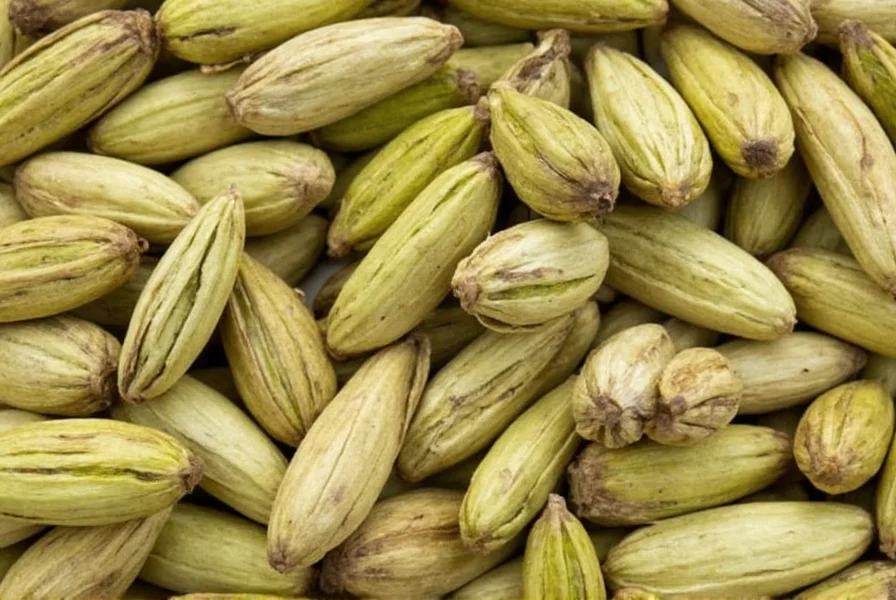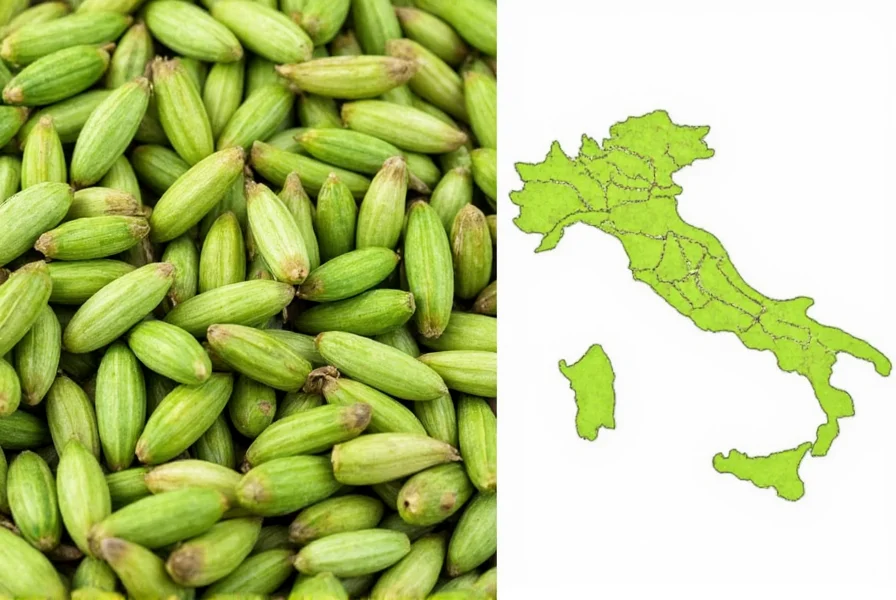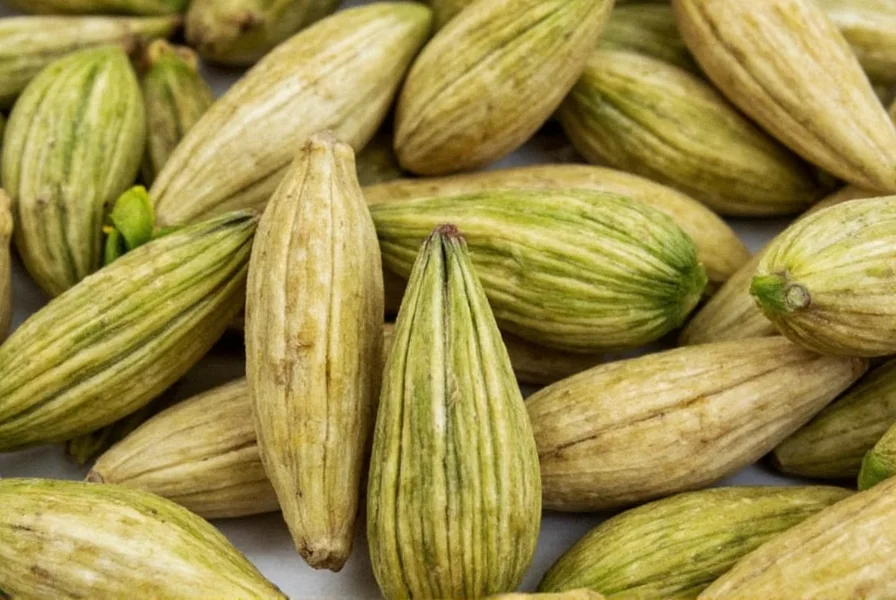Cardamom, one of the world's oldest and most valuable spices, has a fascinating journey from its native habitats to kitchen shelves worldwide. Understanding its relationship with Italy requires examining both botanical realities and culinary traditions.
Botanical Origins of Cardamom
Cardamom (Elettaria cardamomum) belongs to the ginger family (Zingiberaceae) and thrives in tropical and subtropical climates. Its natural habitat spans Southern India, Sri Lanka, and parts of Southeast Asia where warm temperatures, high humidity, and well-drained soil create ideal growing conditions. The plant requires specific environmental conditions that simply don't exist in Italy's Mediterranean climate.
Unlike native Italian herbs such as rosemary, thyme, and oregano that have adapted to the region's dry summers and mild winters, cardamom needs consistent warmth year-round without frost. Italy's climate, particularly outside of Sicily's southernmost regions, cannot support cardamom cultivation without expensive greenhouse environments that aren't economically viable for commercial production.
Historical Presence of Cardamom in Europe
Cardamom entered European markets through ancient spice trade routes, primarily via Venetian and Genoese merchants who connected with Arab traders. Historical records show cardamom appearing in European apothecaries and royal courts as early as the 13th century, though it remained an expensive luxury item.
Unlike spices such as black pepper that became integrated into European cooking traditions, cardamom never gained widespread popularity in Italian cuisine. This contrasts with Nordic countries where cardamom became deeply embedded in baking traditions. The spice trade routes favored certain spices over others based on local tastes and preservation needs, leaving cardamom as a specialty item rather than a kitchen staple in Italy.
Current Availability of Cardamom in Italy
While cardamom is not found growing wild in Italy, consumers can easily purchase it through several channels:
| Availability Source | Common Formats | Price Range (per 50g) |
|---|---|---|
| Specialty Food Stores | Whole pods, ground | €8-€15 |
| Asian Grocery Stores | Whole pods, seeds | €5-€10 |
| Online Retailers | Various forms | €6-€12 |
| Major Supermarkets | Primarily ground | €7-€14 |
Major Italian cities like Rome, Milan, and Florence have specialty spice shops where cardamom appears alongside other international spices. In smaller towns, availability might be limited to larger supermarkets or require ordering online. The growing interest in global cuisines has increased cardamom's presence in Italian markets over the past two decades.
Cardamom in Italian Culinary Traditions
Traditional Italian cooking rarely features cardamom. Regional Italian cuisines developed using locally available herbs and spices that complemented native ingredients. The aromatic profile of cardamom—citrusy, floral, and slightly medicinal—doesn't align with classic Italian flavor combinations that favor earthy, herbal notes.
When examining does cardamom grow in italy naturally, the answer remains no, but contemporary Italian chefs occasionally incorporate cardamom into innovative dishes. Some modern interpretations of tiramisu use a hint of cardamom, while experimental gelato makers create cardamom-infused flavors. These applications remain exceptions rather than traditions.
Compared to countries like Sweden, Norway, and India where cardamom is fundamental to national dishes, Italian cuisine maintains its distinctive character through different aromatic profiles. Understanding where to buy cardamom in rome might interest visitors, but locals typically reach for fennel pollen, saffron, or wild herbs instead.

Cardamom Across Mediterranean and European Contexts
The Mediterranean region shares similar climate constraints that prevent cardamom cultivation. No Mediterranean country grows cardamom commercially outdoors. Spain, Greece, and Turkey face the same botanical limitations as Italy when it comes to growing this tropical spice.
However, cardamom availability in european countries varies significantly. Nordic countries import substantially more cardamom per capita than Mediterranean nations due to historical culinary integration. In contrast, Mediterranean cuisines developed with different spice preferences based on ancient trade routes and local herb availability.
When considering is cardamom used in italian cuisine versus other European traditions, the answer reveals fascinating cultural patterns. While Italian cooking emphasizes fresh herbs and simple preparations, Scandinavian baking traditions incorporate cardamom prominently in breads and pastries.
Practical Guidance for Finding Cardamom in Italy
Travelers or residents seeking cardamom in Italy should consider these practical approaches:
- Visit specialty spice shops in major cities, particularly those focusing on international ingredients
- Check Asian grocery stores which often carry whole cardamom pods at better prices
- Look for "spezie" or "prodotti etnici" sections in larger supermarkets
- Consider online retailers that deliver throughout Italy for consistent availability
- Ask at local markets whether vendors can order cardamom for you
When searching for where to buy cardamom in rome specifically, neighborhoods with diverse populations like Pigneto or San Lorenzo often have stores catering to international customers. In Milan, the area around Porta Venezia offers several specialty food shops with global spice selections.

Conclusion: Cardamom's Place in the Italian Context
While cardamom doesn't grow naturally in Italy and isn't part of traditional Italian cooking, it remains accessible to those seeking it. The spice's journey to Italian shelves represents global trade connections rather than local cultivation. Understanding the distinction between does cardamom grow in italy naturally versus its commercial availability helps clarify this common point of confusion.
Italian cuisine's strength lies in its regional diversity and reliance on locally appropriate ingredients. Cardamom's absence from traditional recipes reflects historical and botanical realities rather than any culinary deficiency. For those exploring mediterranean spices versus cardamom, the contrast reveals how different cultures develop unique flavor profiles based on available resources.
Frequently Asked Questions
Does cardamom grow wild in Italy?
No, cardamom does not grow wild in Italy. The spice requires tropical conditions that Italy's Mediterranean climate cannot provide. Cardamom plants need consistent warmth, high humidity, and frost-free environments that only exist in limited greenhouse settings in Italy.
Can I find cardamom in Italian supermarkets?
Yes, you can find cardamom in larger Italian supermarkets, though availability varies. Major chains like Esselunga, Coop, and Carrefour typically stock ground cardamom in their international or specialty spice sections, while whole pods are more commonly found in specialty food stores or Asian markets.
Is cardamom used in traditional Italian recipes?
Cardamom is not used in traditional Italian recipes. Italian cuisine developed using locally available herbs like rosemary, oregano, and sage rather than tropical spices. While some modern chefs incorporate cardamom into innovative dishes, it remains outside authentic regional Italian cooking traditions.
Where can I buy cardamom in Rome?
In Rome, you can buy cardamom at specialty spice shops like Spezieria de' Girolami, Asian grocery stores in the Esquilino district, larger supermarkets such as Carrefour, or online retailers that deliver throughout the city. Neighborhoods with diverse populations like Pigneto often have stores with international spice selections.
Why doesn't Italy grow cardamom commercially?
Italy doesn't grow cardamom commercially because the country's climate doesn't match cardamom's tropical requirements. The plant needs consistent warmth year-round without frost, high humidity, and specific soil conditions that would require expensive greenhouse environments not economically viable for commercial production in Italy.











 浙公网安备
33010002000092号
浙公网安备
33010002000092号 浙B2-20120091-4
浙B2-20120091-4